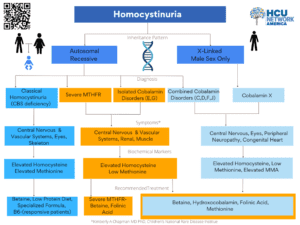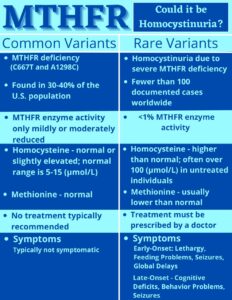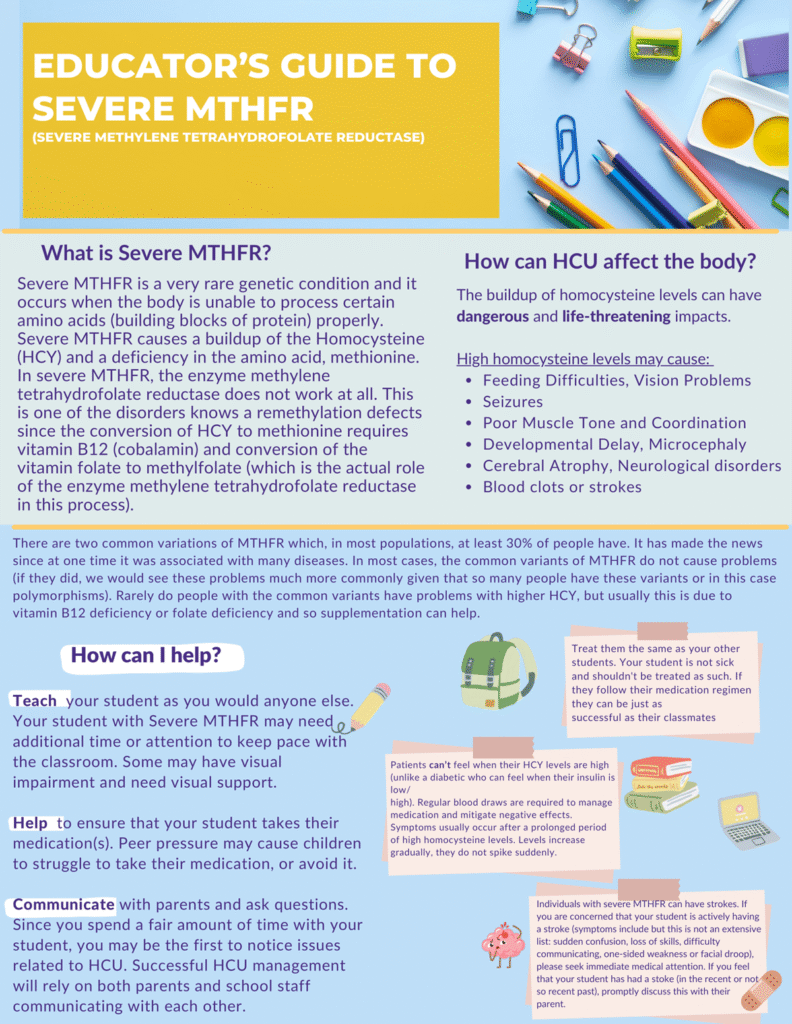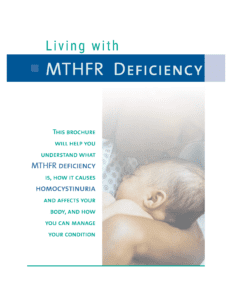Homocystinuria is confusing! The HCU Flow chart is designed to help those related to someone with or interested in HCU better understand the similarities and differences. The chart breaks down and shows how the inheritance, symptoms, markers, and treatments for each of the disorders are similar and different.
The “All About Me” pamphlet is a great tool to help people understand your child, their condition, and how to help them to be as successful as possible in life! The pamphlet is generally built for a school setting, but it also is a great way to inform babysitters, coaches, and family members about critical things that are very important to your child. Some people may be afraid to ask some of these fundamental questions about your child and their disorder, but this pamphlet makes it simple to convey that information.
Our Educators’ Guide to Methylene tetrahydrofolate reductase (MTHFR) is designed to spring-board that discussion between you, the school nurse and classroom teacher(s). In our Educators’ Guide we give you an easy explanation of MTHFR, the difference between severe MTHFR and the common form, how high levels may impact your child, how teachers and nurses can help, possible medicine side effects, helpful tips for success, and educational accommodations and additional services that might benefit your student. We know that teachers don’t have a lot of time, so this two page guide is the perfect amount of content to help get the conversation started.
When you have HCU or any other special dietary needs, being ready to handle difficult situations requires special planning, in addition to the typical things everyone needs to consider in the event of an emergency or natural disaster. Here are some key things to think about and discuss with your family today.
Prepare yourself in advance!
Special Education services are available for eligible students with disabilities. This handbook provides information about procedures, answers to frequently asked questions, and links to other resources. This information is meant to be an introduction to special education and may vary between states. For specific laws and regulations to special education in your state, visit your State Department of Education.
Transition to Adulthood: Milestones Assessment Guide
Thanks to advances in research, people with homocystinuria are living healthier and more active lives than ever before—juggling busy schedules, careers and family. If they aren’t doing these things, that’s okay too; life doesn’t always look the same for everyone.
This guide is intended to help people with homocystinuria gain the knowledge and skills they need as they grow up to more independently manage their condition. Our flexible toolset is designed for people with homocystinuria to use with their caregivers and care teams to support the transition from childhood to adulthood.
Would you like to request a physical copy of any of the tools seen above?
Fill out the form below and we are glad to send you physical copies.
Outside Resources
Homocystinuria caused by 5,10-methylenetetrahydrofolate reductase (MTHFR) deficiency occurs when the body makes too little MTHFR enzyme or none at all, or it makes MTHFR enzyme that does not work properly. Enzymes are proteins that regulate the body’s tissues and organs. Specifically, MTHFR helps convert an important amino acid—homocysteine— back to methionine, another important amino acid.
When this process does not occur as it should, blood levels of homocysteine increase and blood levels of methionine decrease. This causes harmful symptoms to develop.









